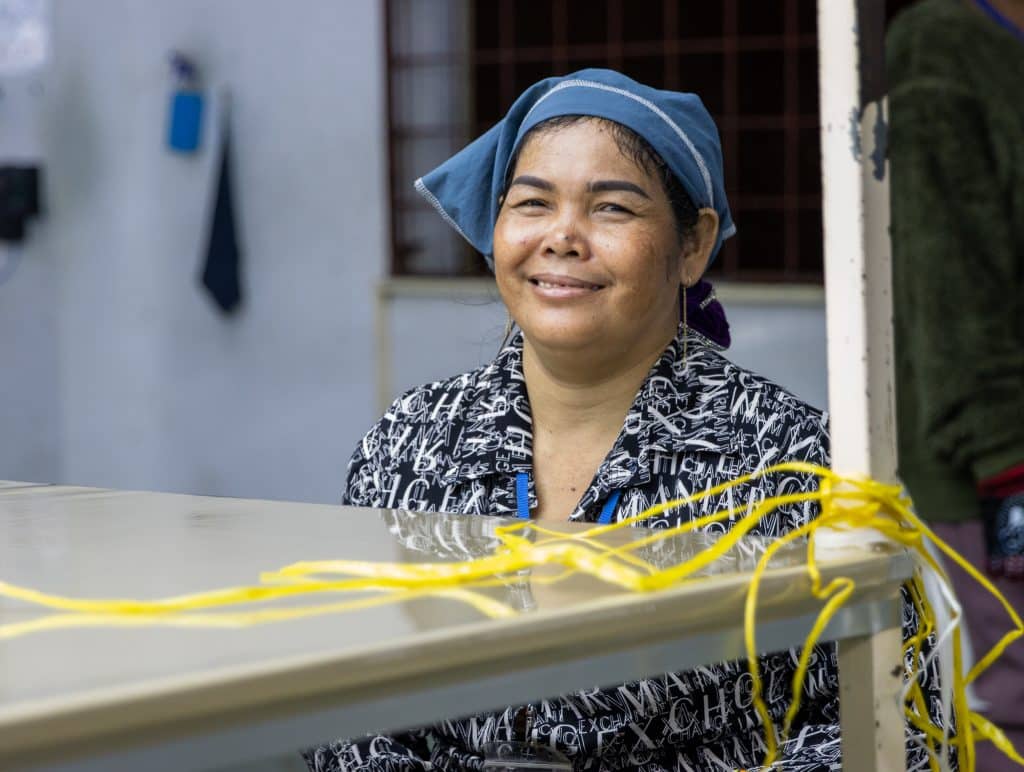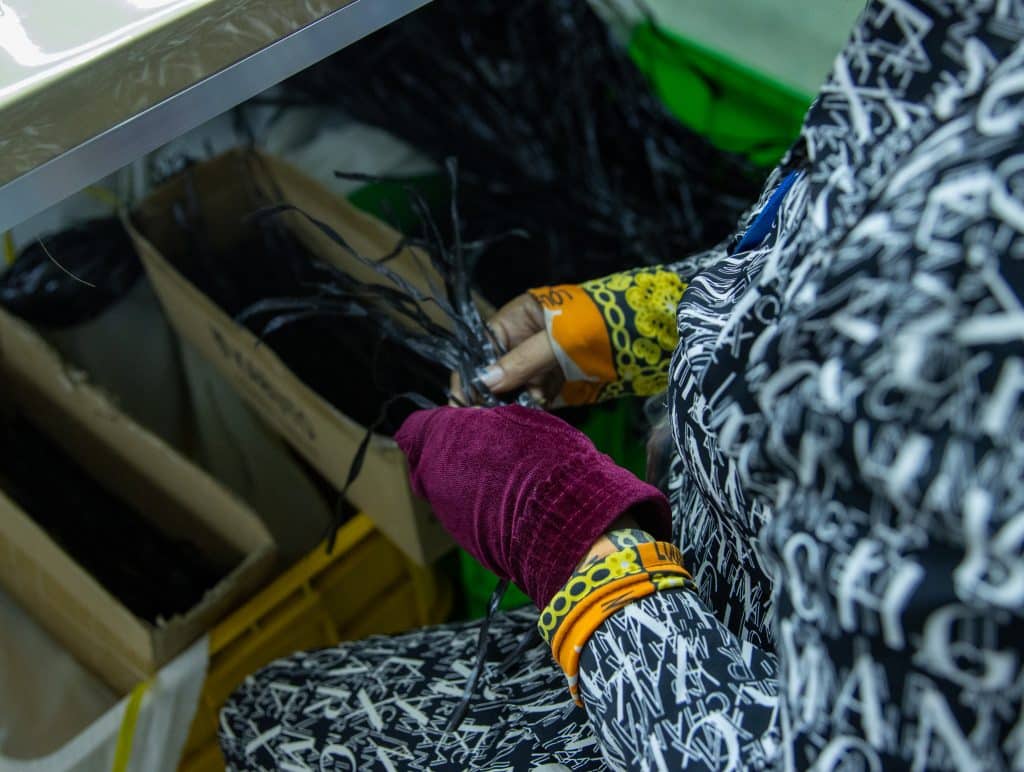In 2022, the International Labour Organization (ILO) declared a safe and healthy working environment as a fundamental principle and right at work for all workers. As Better Work supports factories to respect, promote and realize this new fundamental right, we consider one story that exemplifies the importance of ensuring safety and health at work.
One worker’s story
In June 2023, Suly, a 40-year-old garment worker from Takeo province, Cambodia, started her shift like any other day. She had been working at her factory for over eight years, with one of her daily tasks being to clean a debris vacuum machine. That afternoon, while cleaning the back of the apparatus, something went tragically wrong. A colleague, unaware that Suly was still working on the machine, switched it on.
Suly recounts the next moments: “I remember that a lot happened very quickly—I don’t recall everything clearly, but I distinctly heard screams as soon as the machine started. I saw my right hand’s palm getting caught in the machine, then I fainted.”

She was rushed to a nearby medical centre, but her injuries were too severe to be treated there. She was transferred first to a hospital in Takeo and then to Phnom Penh, where she remained hospitalized for nearly three months. Her right palm had been torn away, nerves were damaged, and she required ten surgeries. The accident changed her life forever.
Suly’s experience, unfortunately, is not unique. According to the ILO, across the globe, annually, an estimated 395 million workers sustain a non-fatal work injury, and 2.93 million workers die each year as a result of work-related factors. Hazards in the garment industry include dangerous machinery, fire hazards, hazardous chemicals, psycho-social hazards, high noise levels, ergonomic hazards, and others. In the countries where Better Work is active, persistent, high levels of non-compliance with national and international standards on occupational safety and health (OSH) are common.
In 1998, the ILO adopted the Declaration on Fundamental Principles and Rights at Work (FPRW) covering the elimination of child labour, forced labour and discrimination, and the right to freedom of association and collective bargaining. These principles and rights serve as a foundation for promoting decent work. However, occupational safety and health (OSH) had not yet been recognized as a fundamental principle and right at work.
In recent years, the ILO, which has long recognized the need for safer working environments, took steps to elevate the importance of ensuring workers’ rights to a safe and healthy working environment.
Elevating the importance of safety and health
In June 2022, representatives from ILO member states, employers, and worker organizations convened at the 110th International Labour Conference. Following the peak of the COVID-19 pandemic, delegates came to a historic decision to amend the 1998 Declaration on Fundamental Principles and Rights at Work, officially recognising a safe and healthy working environment as the fifth fundamental right. This decision underscored the ILO’s commitment to preventing workplace injuries, diseases, and fatalities.
In response, Better Work has adapted its factory assessment tools to reflect OSH as a FPRW and prioritize prevention of hazards and accidents. While most of the OSH section of the compliance assessment tool remains the same, key questions have been revised or added. For example, factories will now be evaluated on their ability to conduct more robust risk assessments than before, to put in place arrangements for workers to report an imminent danger to their life or health, and to collaborate with other employers to ensure OSH when they work in the same workplace. A grace period allows factories time to adapt to the changing requirements.
For buyers, including global brands sourcing from factories in developing countries, this shift brings new responsibilities. While the standards still vary depending on sourcing destination, there is a clear global message that OSH is now of fundamental importance. Ideally, factories that fail to meet OSH standards should be motivated to improve, as responsible sourcing policies now place greater emphasis on workplace safety. Brands will also need to work closely with factories, supporting improvements in OSH.
For workers like Suly, this recognition will, in time, make garment factories safer places to work. It means that governments and employers must take a more proactive role on OSH, ensuring that required safety measures are put into place and maintained over time.
Returning to work: A new beginning
In recent years, Cambodia has actively strengthened its social protection policies, expanding coverage and improving implementation mechanisms. During the time she was unable to work, Suly received 70 per cent of her monthly salary payments through the Employment Injury Scheme. Later, she was issued a permanent disability card by Cambodia’s National Social Security Fund (NSSF). She wanted to return to work but knew she could no longer perform the tasks she once did. Instead, her factory offered her a new role – sorting plastic strings used in garment production, a task that could be done with limited hand mobility.

Though she is grateful to return to work, the accident has changed her life. “I can no longer use my right hand as I once did. It saddens me when I think about how I miss doing everyday things, like preparing food and gardening—activities I once loved,” Suly explains. The accident has left her fearful of machinery, but it has also made her an advocate for stronger safety measures in the workplace.
From individual factories to global supply chains, recognising OSH as a fundamental right means a shared responsibility, ensuring that experiences like Suly’s do not recur, and driving meaningful, systemic improvements in workplace safety.